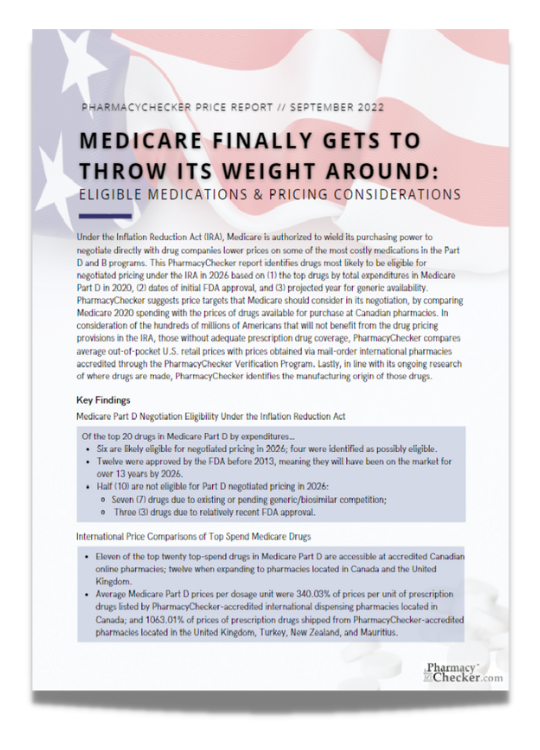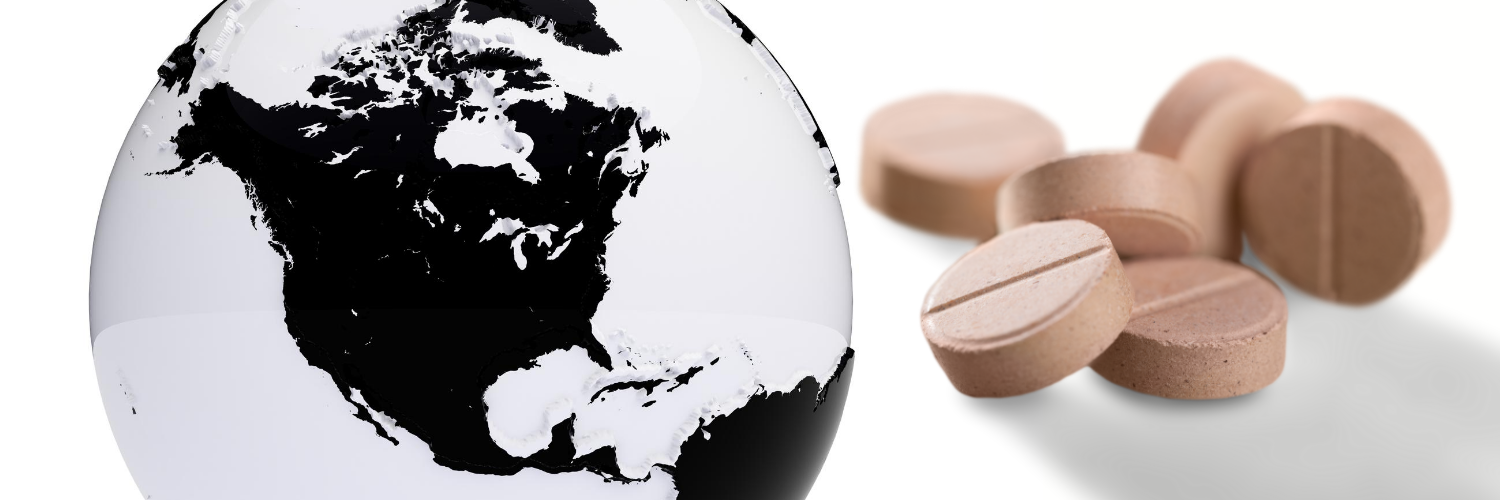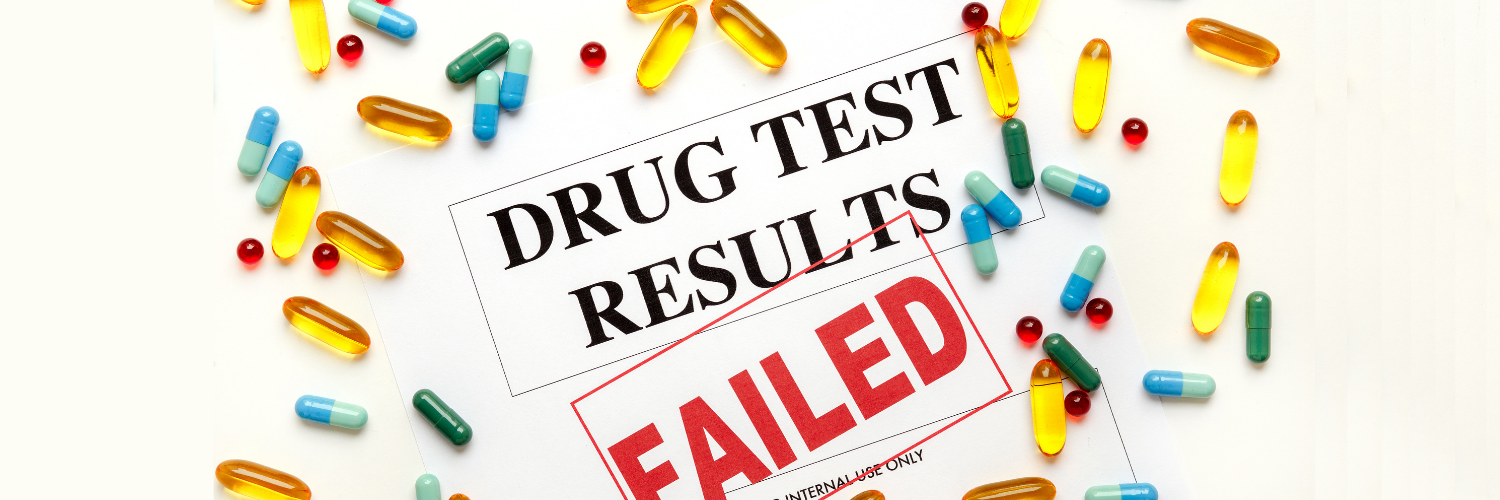Medicare finally gets to throw its weight around. But for which medications?

Under the Inflation Reduction Act (IRA), Medicare is authorized to wield its purchasing power to negotiate lower prices on some of the most costly medications in the Part D and B programs. This PharmacyChecker report identifies drugs most likely to be eligible for negotiated pricing under the IRA in 2026 based on (1) the top drugs by total expenditures in Medicare Part D in 2020, (2) dates of initial FDA approval, and (3) projected year for generic availability.
PharmacyChecker suggests price targets that Medicare should consider in its negotiation, comparing Medicare 2020 spending with the prices of drugs available for purchase at Canadian pharmacies. In consideration of the hundreds of millions of Americans that will not benefit from the drug pricing provisions in the IRA, those without adequate prescription drug coverage, PharmacyChecker compares average out-of-pocket U.S. retail prices with prices obtained via mail-order international pharmacies accredited through the PharmacyChecker Verification Program. Lastly, in line with its ongoing research of where drugs are made, PharmacyChecker identifies the manufacturing origin of those drugs.
Download the Full Drug Price Report Data Here
Key FindingsMedicare Part D Negotiation Eligibility Under the Inflation Reduction ActOf the top 20 drugs in Medicare Part D by expenditures…
International Price Comparisons of Top Spend Medicare Drugs
International Price Comparisons For Americans Not Enrolled in Medicare, Who Lack Adequate Prescription Drug Coverage
Manufacturing Origin of Top Spend Medicare Drugs
|
What makes a Medicare Part D drug eligible for negotiation under the Inflation Reduction Act?
Back in 2003, in the creation of Part D, Medicare was actually barred from negotiating drug prices under what is referred to as the “non-interference” clause, a provision largely written by drug manufacturers.
Because the IRA prioritizes generic/biosimilar competition as a means to lower drug prices, negotiation is only permitted for the highest-spend, single-source medications in Part B or Part D that have been on the market for many years (9 years for small-molecule drugs; 13 for biologics). These expensive drugs have cornered patients for years into making tough decisions: “Groceries or meds?” “Should I ration my medicine?” “Is this Canadian pharmacy price even real?”
Single-source drugs are medications that do not have FDA-approved generic availability (i.e. drugs that lack competition in the U.S. market). PharmacyChecker has researched and recognizes that brand patent expiration, and even generic approvals, do not necessarily correspond to immediate multi-source availability. The IRA does its best to address this by forbidding the delay in marketing a generic for use to avoid price negotiations.
The Secretary of the Department of Health and Human Services (HHS Secretary) will evaluate eligible drugs as soon as next year and negotiated pricing will roll out as follows:
- 2026 – 10 drugs in Part D
- 2027 – 15 more drugs in Part D
- 2028 – 15 more drugs in Part D or Part B
- 2029 and on – 20 more drugs in Part D or Part B
For 2026, eligible “high-spend” drugs are defined as those on which total Medicare expenditures exceed $200 million. That’s no problem for our top twenty: In 2020, Medicare spent well over $1 billion on each. Drugs that are the only approved indication for only one rare disease and those that are derived from human plasma are also exempt from negotiation.
Report Methodology
Based on the criteria above, PharmacyChecker identified drugs as “likely eligible,” “possibly eligible,” and “not eligible.” Drugs highlighted as “likely eligible” for negotiation in 2026 are based on the date of initial FDA drug approval and the unlikelihood of generic or biosimilar competition in 2026. Drugs were highlighted as “possibly eligible” for negotiation in 2026 based on conflicting reports of generic or biosimilar competition. Generic availability is an estimate based on multiple sources, including drug company annual reporting, stock reporting by EvaluatePharma, and general coverage by MedPageToday, DrugPatentWatch, and FiercePharma. Ultimately, the HHS Secretary will engage manufacturers on their selection of the first ten medications eligible for negotiation in 2024, with negotiated pricing implemented in 2026.
Despite the IRA including enforcement provisions to encourage drug manufacturers to participate in negotiations, a manufacturer could decide to pull the plug on negotiating by withdrawing their medication from Medicare and Medicaid. Several PharmacyChecker.com visitors have pointed out that the problem isn’t always high drug prices on Medicare, but rather the absence of their medication on the formulary altogether.
PharmacyChecker Research September 2022. Drugs are the top 20 single-source medications by total expenditures in Medicare Part D in 2020 as published by the U.S. Centers for Medicare & Medicaid Services. Generic availability is an estimate based on multiple sources, including drug company annual reporting, stock reporting by EvaluatePharma, and general coverage by MedPageToday, DrugPatentWatch, and FiercePharma. It's important to note that brand patent expirations do not necessarily correspond to immediate multi-source availability. Ultimately, the HHS will choose the first ten medications up for negotiation in 2024, with negotiated pricing implemented in 2026.
Drugs Likely Eligible For Negotiated Medicare Pricing in 2026
- Eliquis (apixaban)
- Januvia (sitagliptin phosphate)
- Imbruvica (ibrutinib)
- Jardiance (empagliflozin)
- Ibrance (palbociclib)
- Xtandi (enzalutamide)
ELIQUIS (apixaban): Eliquis, a medication to prevent blood clots and strokes, is the strongest example of a drug eligible for Medicare price negotiation. Eliquis checks all the boxes for eligibility under the IRA: it’s a single-source drug on which Medicare spent $9.9 billion in the year 2020, the highest that year, and, by 2026, it will have been on the market for 13 years.
JANUVIA (sitagliptin phosphate), XTANDI (enzalutamide): Januvia (sitagliptin phosphate) and Xtandi (enzalutamide) are both due for generic competitors in 2026; they will have been on the market for 19 years and 14 years, respectively. Depending on HHS’s analysis in 2024, they may be included despite the projected generic availability.
IMBRUVICA (ibrutinib): With a generic not available until 2032 and its 12-year stint on the market, Imbruvica is expected to be on the list of negotiated drugs.
JARDIANCE (empagliflozin): Having been on the market just a few months shy of Imbruvica, type 2 diabetes drug Jardiance should also show up on the list.
IBRANCE (palbociclib): Despite tentative approval of a generic, Ibrance (palbociclib) appears to have key patents in place to extend exclusivity until 2027 (other sources say 2034!). This paired with its 11 years on the market by 2026, make it a likely candidate for negotiations.
Drugs Possibly Eligible For Negotiated Medicare Pricing in 2026
- Xarelto (rivaroxaban)
- Myrbetriq (mirabegron)
- Levemir FlexTouch (insulin detemir)
- Trulicity (dulaglutide)
Despite insulin meeting all definitions of a biologic, which are drugs made of living cells or tissue, it was only in March 2020 that insulin was officially deemed a biologic by regulators. Biologics are nearly impossible to replicate exactly, therefore they do not have direct generic equivalents: instead, the term used is “biosimilar.”
LEVEMIR (insulin detemir): Levemir is the only biologic drug manufactured by Novo Nordisk out of its four in the top 20-spend list (Novolog, Victoza, Ozempic, Levemir) that could be eligible for negotiation. Insulin detemir, the active ingredient in Levemir, was approved by the FDA in 2005, but the mechanism of administration of the drug has changed: Levemir FlexPen was discontinued once Levemir Flextouch gained supplemental approval in October 2013. Medicare drug spending data lists insulin Detemir, under the Levemir FlexTouch brand name, as the sixteenth top-spend drug in 2020; the vial formulation ranks 94th. In total, Medicare spent over $2 billion on Insulin Detemir (combining formulations) in 2020 alone. Levemir does not have any biosimilars that are directly substitutable, although key patents were set to expire in 2019.
TRULICITY (dulaglutide): If Trulicity is considered a biologic, it would not meet the requirement to have been on the market for 13 years by 2026: Trulicity was approved by the FDA in September 2014. It’s important to note that the IRA, still in the spirit of competition, includes specific provisions to delay negotiation for biologics where there is a “high likelihood” that a biosimilar will be both “licensed and marketed” within the following two years. Therefore it’s unclear if the HHS would negotiate the purchase of Levemir under the IRA.
MYRBETRIQ (mirabegron): Myrbetriq is supposed to have a generic available in 2025 but has a history of generic entry delays. Medicare could put pressure on Astellas Pharma, the manufacturer, by selecting it in the first batch of negotiated drugs. Myrbetriq will have been on the market for 14 years.
XARELTO (rivaroxaban): We also gave Bayer’s Xarelto (rivaroxaban) a “possibly eligible” designation. Bayer’s patent protection for the active ingredient, rivaroxaban, now runs until August 28, 2024, so perhaps Bayer will slip out of 2024 Medicare negotiations unscathed. Besides, Bayer has other cash cows in the works:
Between 2020 and 2027 period, Bayer projected a €3 billion sales decline driven mostly by Xarelto. Eylea’s sales decline should be modest by comparison and compensated by growth from Bayer’s line of contraceptive devices, as well as its cancer drugs Stivarga and Xofigo…”
Why Certain Drugs Are Not Eligible for Medicare Negotiation Under the Inflation Reduction Act
The good news is that the reason the following drugs are not eligible for negotiation is simply that generic/biosimilar competition is either here already or will be here before 2026.
- Revlimid (lenalidomide)
- Lantus Solostar (insulin glargine, hum.rec.anlog)
- Humira (adalimumab)
- Symbicort (budesonide/formoterol fumarate)
- Novolog FlexPen (insulin aspart)
- Victoza (liraglutide)
- Breo Ellipta (fluticasone/vilanterol)
REVLIMID (lenalidomide): In March 2022, Teva Pharmaceuticals launched a generic for Revlimid with volume-limited availability, with restrictions fully lifted by 2026. LANTUS (insulin glargine): The FDA approved an interchangeable biosimilar of Lantus, called Semglee, in July 2021. (For those using Levemir, Semglee is worth looking into as a worthwhile alternative, although it is not considered a direct biosimilar.)
HUMIRA (adalimumab): In April 2022, it was reported that “a wave of biosimilars of the anti-inflammatory drug Humira (adalimumab) are expected to flood the market in 2023. There could be as many as 11 on the market by the end of next year, based on current FDA approvals and pending applications.”
NOVOLOG (insulin aspart), SYMBICORT (budesonide/formoterol fumarate), BREO ELLIPTA (fluticasone/vilanterol): Novolog FlexPen biosimilar, insulin aspart, and generics for Symbicort and Breo Ellipta are already on pharmacy shelves.
VICTOZA (liraglutide): Victoza's active ingredient patent expires in 2023, with other drug companies champing at the bit to offer alternatives.
When are the rest likely eligible, if ever?
- Biktarvy (bictegravir/emtricitabine/tenofovir alafenamide)
- Trelegy Ellipta (fluticasone/umeclidinium /vilanterol)
- Ozempic (semaglutide)
BIKTARVY (bictegravir/emtricitabine/tenofovir alafenamide): Gilead sciences gained FDA approval for Biktarvy, an HIV/AIDs treatment, relatively recently in 2018, making it likely eligible for the second round of negotiations, taking effect in 2027. With generic availability projected for 2036, beneficiaries could enjoy nine years with a negotiated Medicare deal. By 2030, 70 percent of Americans living with HIV are estimated to be 50 years of age or older (Medicare currently covers ages 65 and older).
TRELEGY ELLIPTA (fluticasone/umeclidinium /vilanterol): Trelegy was approved in September 2017. It could be up for negotiated pricing in 2027, after which it could enjoy three years with a negotiated Medicare deal because generic availability is projected for 2030.
OZEMPIC (semaglutide): The FDA approved Novo Nordisk’s Ozempic (semaglutide) in 2017, with patents not set to expire until 2032, meaning Ozempic could be eligible for negotiation as soon as 2028 – negotiated pricing would be implemented in 2030.
What is the Right Medicare Negotiated Price for Eligible Drugs?
Medicare enrollment sits at 61.6 million beneficiaries compared to the population of Canada, 38 million. While not as egregious as drug pricing in the United States, Canada’s prices are often higher than those of other high-income countries. Certainly, the weight of Medicare’s negotiation power warrants a similar, if not better, deal.
Unfortunately, that’s not how the Inflation Reduction Act works, instead calculating a “maximum fair price” depending on the time that has elapsed since FDA approval.
The 2026 “maximum fair price” is calculated as a percentage of a drug’s nonfederal average manufacturing price (non-FAMP) in 2021 or the first full year following its market entry, along with a percentage increase in the consumer price index. The manufacturer must also submit research and development costs, current costs of production, history of federal funding, and data regarding patents and revenue in the United States. The Secretary will also consider existing therapeutic alternatives and their costs.
| Time elapsed since FDA approval | How maximum fair price is calculated |
| 9-12 years | 75% x non-FAMP |
| 12-16 years | 65% x non-FAMP |
| 16+ | 40% x non-FAMP |
The Congressional Budget Office defines the non-FAMP as follows:
The average price paid to manufacturers by wholesalers for drugs distributed to nonfederal purchasers, reflecting discounts but excluding any prices found by VA to be merely nominal (for example, in the case of drugs delivered to charities). The non-FAMP does not reflect rebates paid by the manufacturer to third-party payers (such as insurance companies or pharmacy benefit management companies). The non-FAMP is reported to VA and is not publicly available. It is analogous to the AMP, which is used to determine Medicaid rebates.”
So the non-FAMP poses yet another transparency problem in the world of U.S. drug pricing: it’s not publicly available.
Still, Canadian prices at least serve as a reasonable benchmark. Canadian prices per dosage unit are currently an average of 63.61% lower than average Medicare Part D prices per dosage unit.
Average Medicare Part D prices per dosage unit were 340.03% of the lowest prices per unit of prescription drugs listed by PharmacyChecker-accredited pharmacies in Canada.
International Price Comparisons For Americans Not Enrolled in Medicare, Who Lack Adequate Prescription Drug Coverage
The international price discrepancies of those drugs available from international mail order pharmacies accredited through the PharmacyChecker Verification Program are enormous: Average U.S. pharmacy prices were 300.48% of prices of prescription drugs shipped from PharmacyChecker-accredited pharmacies in Canada. Beyond Canada – to PharmacyChecker-accredited pharmacies located in the United Kingdom, Turkey, New Zealand, and Mauritius – U.S. out-of-pocket retail prices were over eleven times higher (1176.25%) than international mail order.
PharmacyChecker Research August 2022. Drug prices are per unit. Formulation included where medications have multiple forms.
Drugs are among the top 20 single-source medications by total expenditures in Medicare Part D in 2020 as published by the U.S. Centers for Medicare & Medicaid Services that have mail order availability through PharmacyChecker-accredited online pharmacies.
Average U.S. Retail Pharmacy Prices from GoodRx.com and Drugs.com; Canadian and International Pharmacy Prices from PharmacyChecker.com. Sample of inhalers based on those identified as the top 20 single-source medications by total expenditures in Medicare Part D in 2020 as published by the U.S. Centers for Medicare & Medicaid Services that have mail order availability through PharmacyChecker-accredited online pharmacies.
Manufacturing Origin of Top Spend Medicare Drugs
The report identifies countries of manufacture for the top 20 drugs by total expenditures in Medicare Part D in 2020, finding that drug companies manufacture 70% of the drugs on which Medicare spends the most outside of the United States. This data is included to highlight that the U.S. uses drug importation in the distribution of most prescription drug products.
As highlighted in previous PharmacyChecker research, Customs Border Patrol (CBP) and the FDA have conflicting definitions of the origin of a drug. The CBP relies on the origin of the active ingredient, while the FDA is more concerned with where a product is finished.
In the cases where two countries are listed, the first is the origin of the active ingredient, the second is that of the finished product or formulation.
The FDA would consider 65% of this dataset to be manufactured abroad.
The CBP would consider it 70%.
The slight difference is due to Xarelto's active ingredient, rivaroxaban, originating in Germany; the final Xarelto drug product is finished in Puerto Rico, an unincorporated U.S. territory.
PharmacyChecker highlighted the 70% percentage to illustrate the global nature of the pharmaceutical supply chain and to punctuate that the U.S. already relies on drug importation for most of our pharmaceuticals.
| Average: | 70% of medications manufactured abroad |
PharmacyChecker Research September 2022. Sources: Country of manufacture determined through the National Library of Medicine and FDA Labeling Package Insert drug information. Drug sample is the top 20 drugs by total expenditures in Medicare Part D in 2020 as published by the U.S. Centers for Medicare & Medicaid Services.





